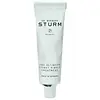What's inside
What's inside
 Key Ingredients
Key Ingredients

 Benefits
Benefits

 Concerns
Concerns

 Ingredients Side-by-side
Ingredients Side-by-side

Water
Skin ConditioningPropanediol
SolventAmmonium Acryloyldimethyltaurate/Beheneth-25 Methacrylate Crosspolymer
Emulsion StabilisingGlycerin
HumectantPolyvinyl Alcohol
Sodium Polyacrylate
AbsorbentSalicylic Acid
MaskingCapryloyl Salicylic Acid
ExfoliatingSalix Alba Bark Extract
AstringentPanthenol
Skin ConditioningPeumus Boldus Leaf Extract
MaskingRheum Palmatum Root Extract
AstringentZingiber Officinale Root Extract
MaskingGlycyrrhiza Glabra Root Extract
BleachingXanthan Gum
EmulsifyingHydroxyacetophenone
AntioxidantButylene Glycol
HumectantPolyglyceryl-4 Caprate
EmulsifyingPolyglyceryl-6 Caprylate
EmulsifyingPentylene Glycol
Skin ConditioningPhenoxyethanol
PreservativeWater, Propanediol, Ammonium Acryloyldimethyltaurate/Beheneth-25 Methacrylate Crosspolymer, Glycerin, Polyvinyl Alcohol, Sodium Polyacrylate, Salicylic Acid, Capryloyl Salicylic Acid, Salix Alba Bark Extract, Panthenol, Peumus Boldus Leaf Extract, Rheum Palmatum Root Extract, Zingiber Officinale Root Extract, Glycyrrhiza Glabra Root Extract, Xanthan Gum, Hydroxyacetophenone, Butylene Glycol, Polyglyceryl-4 Caprate, Polyglyceryl-6 Caprylate, Pentylene Glycol, Phenoxyethanol
Water
Skin ConditioningButylene Glycol
HumectantTalc
AbrasiveCetearyl Alcohol
EmollientGlyceryl Stearate Citrate
EmollientAlpha-Glucan Oligosaccharide
CleansingButyrospermum Parkii Butter
Skin ConditioningPropanediol
SolventHelianthus Annuus Seed Oil
EmollientGlycerin
HumectantBifida Ferment Lysate
Skin ConditioningHydrogenated Vegetable Glycerides
EmollientBrassica Campestris Sterols
EmollientDimethylimidazolidinone Rice Starch
AbsorbentPrunus Armeniaca Kernel Oil
MaskingIctasol
AntimicrobialMaclura Cochinchinensis Leaf Prenylflavonoids
Asiatic Acid
Skin ConditioningMadecassic Acid
Skin ConditioningAsiaticoside
AntioxidantSodium Hyaluronate
HumectantPanthenol
Skin ConditioningAllantoin
Skin ConditioningXanthan Gum
EmulsifyingEthylhexylglycerin
Skin ConditioningSodium Phytate
Tocopherol
AntioxidantPantolactone
HumectantSodium Benzoate
MaskingAcetic Acid
BufferingSodium Sulfate
Lactic Acid
BufferingPhenoxyethanol
PreservativeAlcohol
AntimicrobialCitric Acid
BufferingWater, Butylene Glycol, Talc, Cetearyl Alcohol, Glyceryl Stearate Citrate, Alpha-Glucan Oligosaccharide, Butyrospermum Parkii Butter, Propanediol, Helianthus Annuus Seed Oil, Glycerin, Bifida Ferment Lysate, Hydrogenated Vegetable Glycerides, Brassica Campestris Sterols, Dimethylimidazolidinone Rice Starch, Prunus Armeniaca Kernel Oil, Ictasol, Maclura Cochinchinensis Leaf Prenylflavonoids, Asiatic Acid, Madecassic Acid, Asiaticoside, Sodium Hyaluronate, Panthenol, Allantoin, Xanthan Gum, Ethylhexylglycerin, Sodium Phytate, Tocopherol, Pantolactone, Sodium Benzoate, Acetic Acid, Sodium Sulfate, Lactic Acid, Phenoxyethanol, Alcohol, Citric Acid
Ingredients Explained
These ingredients are found in both products.
Ingredients higher up in an ingredient list are typically present in a larger amount.
Butylene Glycol (or BG) is used within cosmetic products for a few different reasons:
Overall, Butylene Glycol is a safe and well-rounded ingredient that works well with other ingredients.
Though this ingredient works well with most skin types, some people with sensitive skin may experience a reaction such as allergic rashes, closed comedones, or itchiness.
Learn more about Butylene GlycolGlycerin is already naturally found in your skin. It helps moisturize and protect your skin.
A study from 2016 found glycerin to be more effective as a humectant than AHAs and hyaluronic acid.
As a humectant, it helps the skin stay hydrated by pulling moisture to your skin. The low molecular weight of glycerin allows it to pull moisture into the deeper layers of your skin.
Hydrated skin improves your skin barrier; Your skin barrier helps protect against irritants and bacteria.
Glycerin has also been found to have antimicrobial and antiviral properties. Due to these properties, glycerin is often used in wound and burn treatments.
In cosmetics, glycerin is usually derived from plants such as soybean or palm. However, it can also be sourced from animals, such as tallow or animal fat.
This ingredient is organic, colorless, odorless, and non-toxic.
Glycerin is the name for this ingredient in American English. British English uses Glycerol/Glycerine.
Learn more about GlycerinPanthenol is a common ingredient that helps hydrate and soothe the skin. It is found naturally in our skin and hair.
There are two forms of panthenol: D and L.
D-panthenol is also known as dexpanthenol. Most cosmetics use dexpanthenol or a mixture of D and L-panthenol.
Panthenol is famous due to its ability to go deeper into the skin's layers. Using this ingredient has numerous pros (and no cons):
Like hyaluronic acid, panthenol is a humectant. Humectants are able to bind and hold large amounts of water to keep skin hydrated.
This ingredient works well for wound healing. It works by increasing tissue in the wound and helps close open wounds.
Once oxidized, panthenol converts to pantothenic acid. Panthothenic acid is found in all living cells.
This ingredient is also referred to as pro-vitamin B5.
Learn more about PanthenolPhenoxyethanol is a preservative that has germicide, antimicrobial, and aromatic properties. Studies show that phenoxyethanol can prevent microbial growth. By itself, it has a scent that is similar to that of a rose.
It's often used in formulations along with Caprylyl Glycol to preserve the shelf life of products.
Propanediol is an all-star ingredient. It softens, hydrates, and smooths the skin.
It’s often used to:
Propanediol is not likely to cause sensitivity and considered safe to use. It is derived from corn or petroleum with a clear color and no scent.
Learn more about PropanediolWater. It's the most common cosmetic ingredient of all. You'll usually see it at the top of ingredient lists, meaning that it makes up the largest part of the product.
So why is it so popular? Water most often acts as a solvent - this means that it helps dissolve other ingredients into the formulation.
You'll also recognize water as that liquid we all need to stay alive. If you see this, drink a glass of water. Stay hydrated!
Learn more about WaterXanthan gum is used as a stabilizer and thickener within cosmetic products. It helps give products a sticky, thick feeling - preventing them from being too runny.
On the technical side of things, xanthan gum is a polysaccharide - a combination consisting of multiple sugar molecules bonded together.
Xanthan gum is a pretty common and great ingredient. It is a natural, non-toxic, non-irritating ingredient that is also commonly used in food products.
Learn more about Xanthan Gum